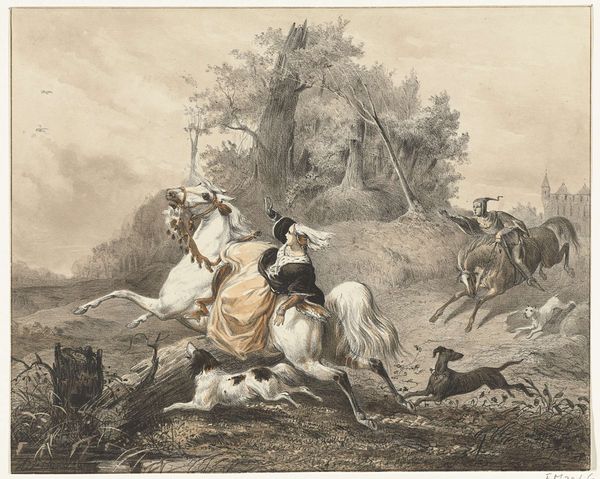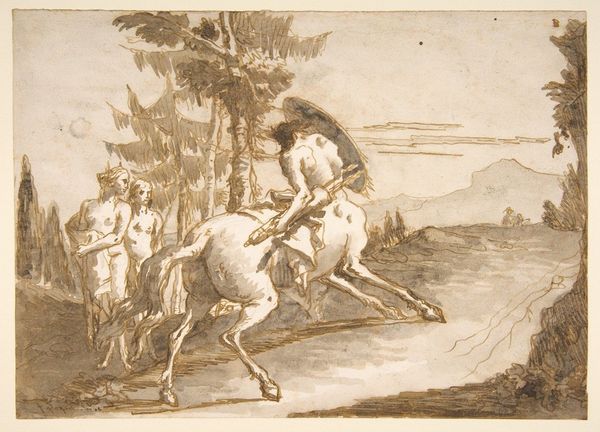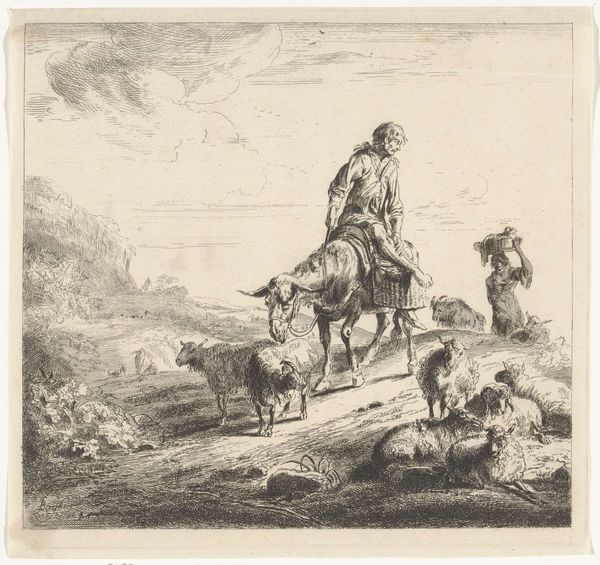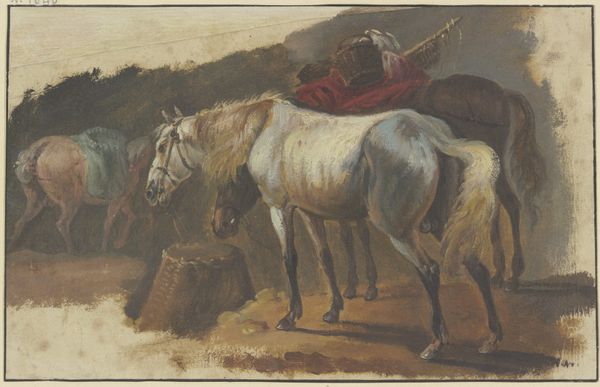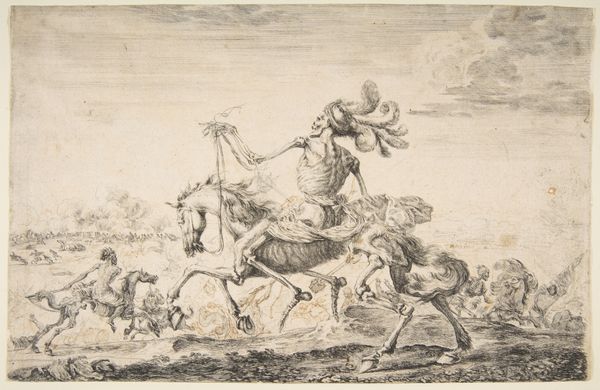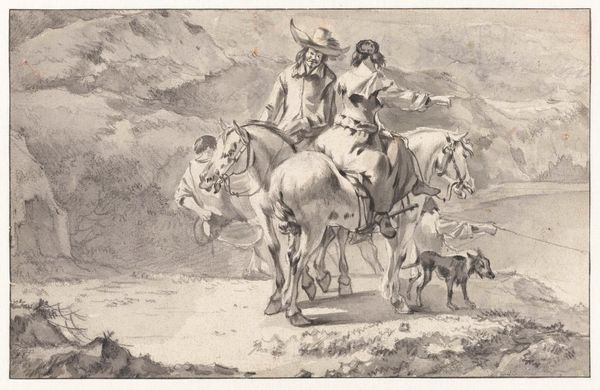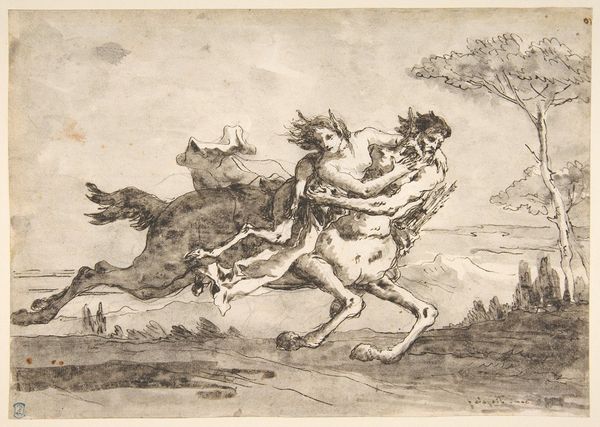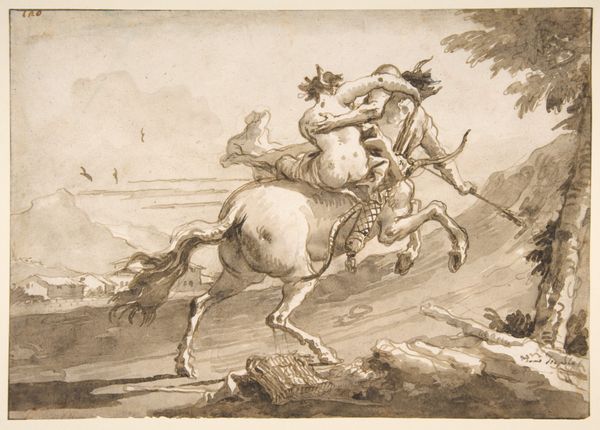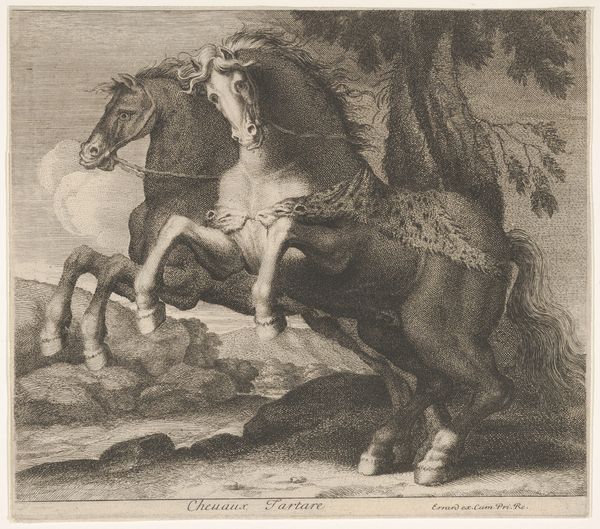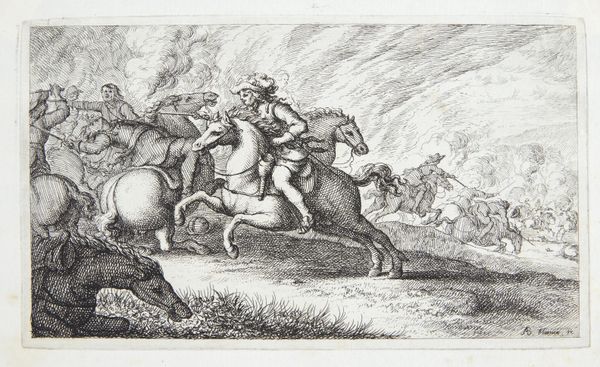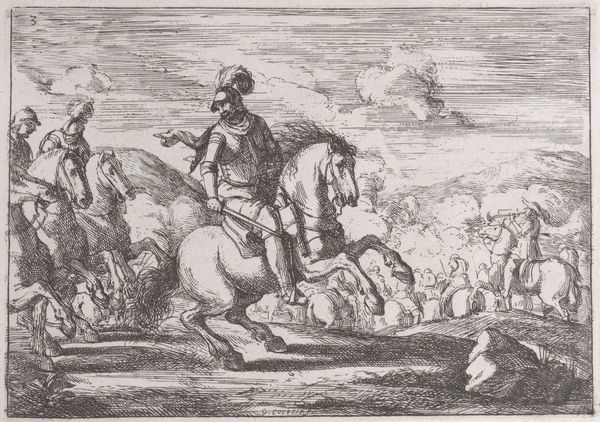
Copyright: Public domain
Editor: Here we have Eugène Delacroix's "The Education of Achilles" from 1862, done with pastel. The colors create a somber tone. What catches my eye is the juxtaposition of this mythical scene rendered with such tangible materials. What's your take? Curator: It’s crucial to consider Delacroix’s choice of pastel. This wasn't high art. Pastel was aligned with *artisanal* craft. How does the rapid, almost sketchy application of pigment shape your understanding of this mythological moment, rather than say, a highly rendered history painting in oil? Editor: I suppose it feels less about celebrating a hero and more about the immediacy of a lesson, almost as if it's documenting a process. Does that link to a social reading somehow? Curator: Precisely. Delacroix is challenging conventional hierarchies. By elevating pastel to depict such a grand subject, he blurs the lines between the academy and the marketplace, between fine art and decorative skill. Consider who consumes pastel works and how that might challenge our assumptions of classical narratives? Editor: So it is more than just showing a myth. Delacroix is doing this by using materials available to him. He almost democratizes access to grand stories through the very stuff he’s using? It feels really subversive now. Curator: Indeed. And what assumptions does the myth of Achilles reinforce or challenge related to the relationship between man and the animal kingdom. Editor: Wow, it’s a different view! Thanks, I appreciate your insight. Curator: It’s fascinating how material choices reshape the reading of familiar stories.
Comments
No comments
Be the first to comment and join the conversation on the ultimate creative platform.

